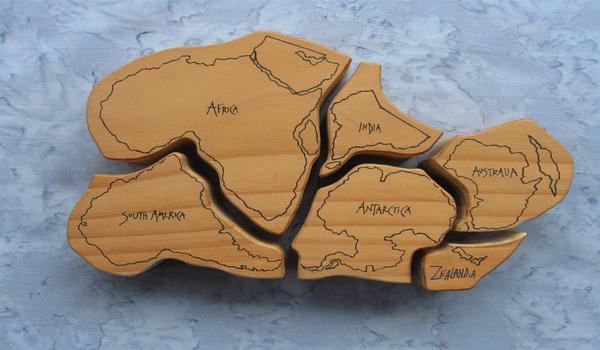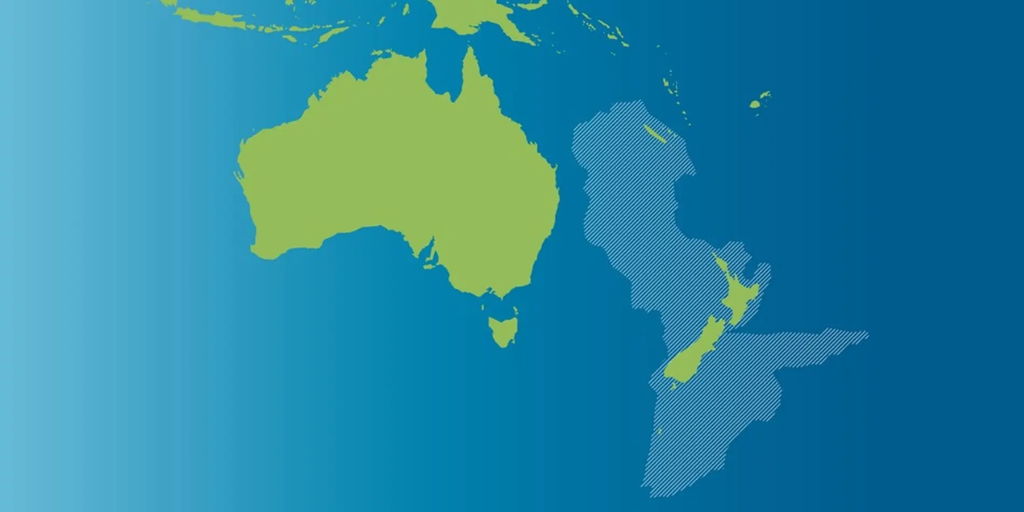With its breathtaking landscapes, unique biodiversity, and distinct Maori culture, New Zealand stands as a jewel in the southwestern Pacific Ocean.
Yet, a curious question often arises: What continent is New Zealand in?
The answer to this seemingly straightforward query unveils a fascinating exploration of tectonic plates, geographic classifications, and the intricate dance of Earth’s ever-changing surface.
In this article, we embark on a journey to unravel the geographical enigma of New Zealand’s continental identity.
1. Considering Zealandia
The understanding of New Zealand’s continental identity takes an intriguing turn when we delve into the concept of Zealandia.
Zealandia is a submerged continental mass that includes New Zealand and New Caledonia. It challenges conventional definitions of continents and underscores the complexity of Earth’s geology.
Zealandia is characterized by its elevated topography, distinctive geology, and precise separation from the surrounding oceanic crust.
While not universally recognized as a continent, the Zealandia concept suggests that New Zealand may be part of a more giant, submerged landmass, challenging the traditional boundaries of continents and opening up new avenues for understanding Earth’s geological evolution.

2. Australia and the Oceania Perspective
From a geopolitical and cultural standpoint, New Zealand is often associated with the region of Oceania.
Oceania encompasses Australasia, Melanesia, Micronesia, and Polynesia, creating a broad and diverse expanse of islands and cultures in the Pacific Ocean.
Australia, New Zealand’s neighbor to the west, is part of the Australian continent. However, New Zealand itself is not considered part of the Australian continent.
The Oceania perspective recognizes New Zealand as a distinct entity within the Pacific region, emphasizing its cultural ties with Polynesia and its unique identity separate from Australia.
This classification aligns with the geopolitical and cultural context, acknowledging the interconnectedness of Pacific nations.
3. Understanding Geographic Continents
Before delving into New Zealand’s continental affiliation specifics, let’s establish a foundation by understanding what constitutes a continent.
Traditionally, continents are large, continuous landmasses separated by expanses of water.
The seven continents commonly recognized are Africa, Antarctica, Asia, Europe, North America, Australia, and South America. However, categorizing landmasses into continents involves more than their size and geographic separation.

4. Continental Plates and Tectonics
The Earth’s lithosphere, comprising rigid plates known as tectonic plates, floats atop the semi-fluid asthenosphere. These plates constantly interact, leading to various geological phenomena such as earthquakes, volcanic eruptions, and the creation of mountain ranges.
New Zealand, situated at the boundary of the Indo-Australian and Pacific tectonic plates, is deeply entwined in this dynamic dance of tectonic activity.
5. New Zealand’s Tectonic Landscape
New Zealand’s unique geography is a direct result of the tectonic forces at play in the region.
The country straddles the boundary of two major tectonic plates: the Indo-Australian Plate to the northwest and the Pacific Plate to the southeast.
This collision of plates gives rise to the Southern Alps, a mountain range that spans the length of the South Island.
The North Island, on the other hand, features volcanic activity, with iconic cones like Mount Ruapehu and Mount Taranaki standing as testaments to the country’s fiery geological past.

6. Quick Facts about Zealandia (New Zealand)
🗺️ Geological Marvel:
- Zealandia, often called the “hidden continent,” is a vast submerged landmass in the southwestern Pacific Ocean.
- Encompassing approximately 4.9 million square kilometers, Zealandia extends beyond the shores of New Zealand to include parts of New Caledonia.
🏞️ Distinctive Geology:
- What sets Zealandia apart is its elevated topography and unique geological characteristics.
- The landmass separates from the surrounding oceanic crust, emphasizing its continental nature
🔍 Scientific Exploration:
- Scientists and geologists are exploring Zealandia to unravel its tectonic history and geological evolution.
- Research vessels equipped with advanced sonar and mapping technologies have played a crucial role in uncovering the submerged continent’s secrets.
🌋 Tectonic Activity:
- Zealandia’s geological story is intricately linked to tectonic plate movements.
- Positioned at the Indo-Australian and Pacific plate boundary, the region is part of the dynamic Pacific Ring of Fire, known for seismic and volcanic activity.
🌏 Implications:
- Recognizing Zealandia as a continent would have far-reaching implications for understanding Earth’s geological processes.
- It challenges the traditional continent’s model and prompts a reevaluation of how we categorize and define landmasses.
🔬 Scientific Significance:
- Zealandia provides a unique opportunity for scientists to study the evolution of continents in a submerged context.
- The landmass offers insights into the interactions between tectonic plates, continental rifting, and the formation of underwater geological features.
🌐 Global Significance:
- Beyond its proximity to New Zealand, Zealandia’s significance extends globally.
- The submerged continent is part of ongoing research on plate tectonics, offering valuable data to enhance our understanding of Earth’s geological history.
📜 Historical Context:
- The concept of Zealandia is familiar and has roots in historical geological studies.
- However, technological advancements and a deeper understanding of plate tectonics have brought Zealandia to the forefront of scientific inquiry.
🌊 Zealandia and Climate Change:
- The submerged continent’s history is interwoven with climate change and sea level fluctuations over millions of years.
- Studying Zealandia’s geological archives could contribute to our understanding of past climate variations and their impact on the Earth’s surface.
🌍 Continental Boundaries:
- Zealandia challenges the notion of fixed continental boundaries by showcasing Earth’s surface’s dynamic and ever-changing nature.
- The concept prompts a reconsideration of how we define and categorize landmasses on a global scale
🌊 Oceanography and Marine Life:
- Beyond its geological significance, Zealandia’s exploration contributes to oceanographic studies.
- The region surrounding the submerged continent is rich in marine biodiversity, and understanding these ecosystems is integral to conservation efforts.
💡 Educational Outreach:
- Zealandia’s exploration presents an opportunity for educational outreach and public engagement.
- The scientific journey to understand Zealandia can inspire curiosity about Earth’s geology and the wonders hidden beneath the ocean’s surface.
🌊 Preservation and Conservation:
- As scientists delve into Zealandia’s depths, considerations for preservation and conservation become paramount.
- The delicate balance between scientific exploration and environmental stewardship is a focal point of discussions surrounding Zealandia.
🔭 Future Research Directions:
- Zealandia’s exploration is an ongoing scientific endeavor, with many questions yet to be answered.
- Future research may involve drilling into the seabed to extract sediment cores, offering a deeper understanding of Zealandia’s geological history.
In what continent is New Zealand in? — The Verdict
So, what continent is New Zealand in? The answer is not as clear-cut as one might expect.
From a traditional geological perspective, New Zealand is not considered part of any specific continent, as it straddles the boundary between two major tectonic plates.
However, the concept of Zealandia challenges these traditional definitions, suggesting that New Zealand may be part of a submerged continent.
Geopolitically and culturally, New Zealand is often associated with the region of Oceania, highlighting its unique identity within the Pacific.
While Australia, as part of the Australian continent, is New Zealand’s closest continental neighbor, New Zealand itself is not part of the Australian landmass.








